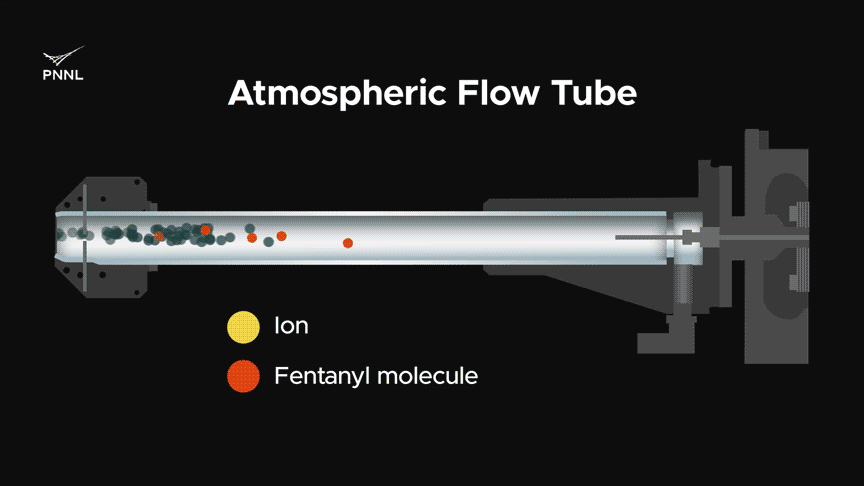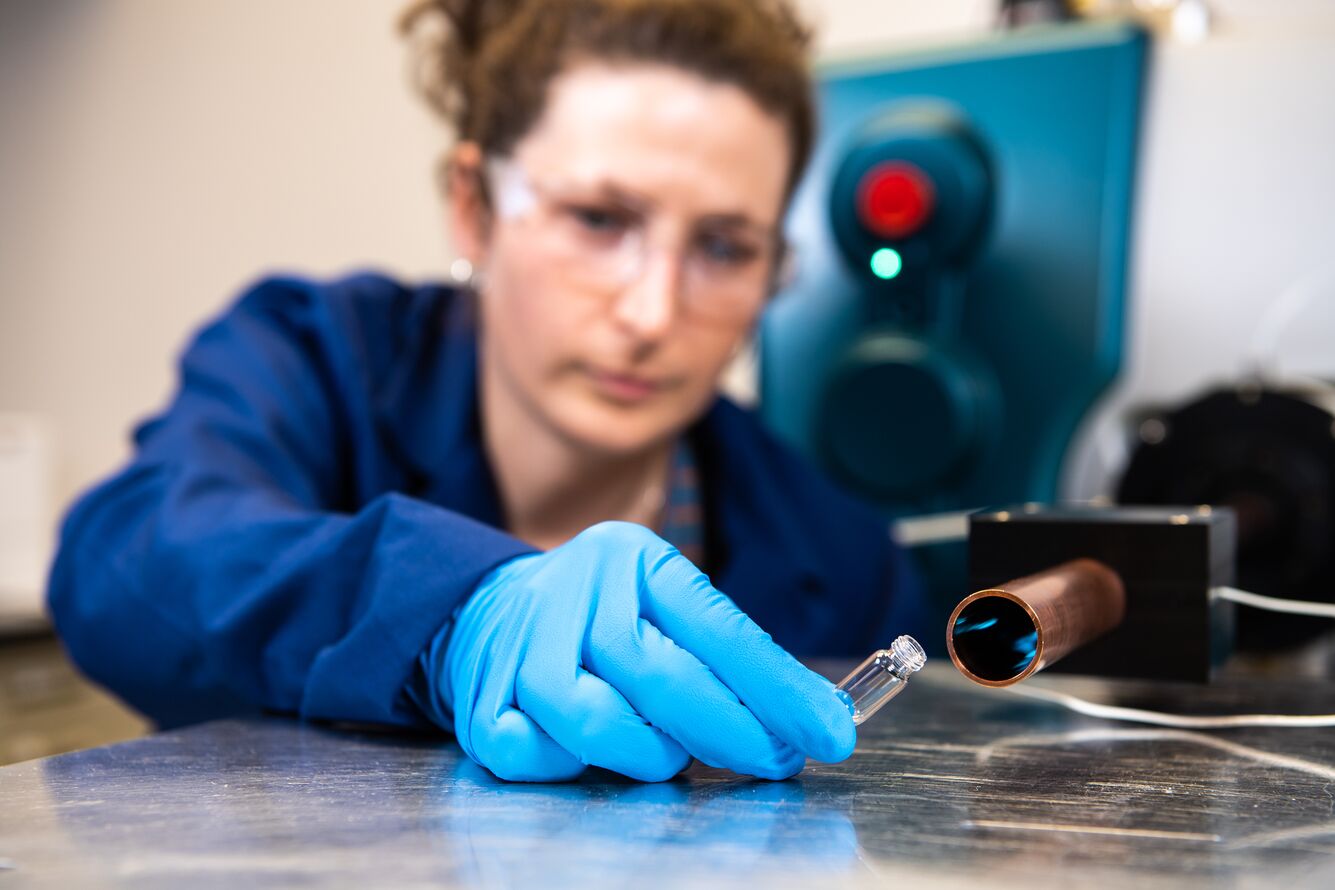RICHLAND, Wash.-A system that detects trace levels of fentanyl, cocaine, explosives and other harmful substances through the air has been created by researchers at the Department of Energy's Pacific Northwest National Laboratory.
New test results of a device based on the technology that was originally developed by PNNL chemist Robert Ewing and colleagues were presented at the annual meeting of the American Society for Mass Spectrometry June 3 in Baltimore.
BaySpec Inc., a Silicon Valley company that is commercializing the technology, has created a portable device equipped with the PNNL technology. At the 2025 ASMS meeting, the company presented results of a test conducted late last year at the U.S. border crossing between Mexico and the United States at Nogales, Ariz.
In a laboratory run by U.S. Customs and Border Protection at Nogales, the device was used to successfully screen for and detect trace amounts of fentanyl as well as other common narcotics, including methamphetamine, MDMA (ecstasy), cocaine and ketamine.
The findings were presented at ASMS by BaySpec scientist Krisztian Torma.

Currently, fentanyl is detected directly either by swiping a surface for chemical analysis, known as contact sampling, or by using dogs trained to sniff out the substance. Border personnel who are attuned to behavioral cues and other factors play a critical role as well.
The new system directly samples the ambient air in a method known as noncontact detection and collects molecules of interest to be analyzed by a miniature mass spectrometer. An instrument previously developed at PNNL that detects trace vapors of substances is the size of a small refrigerator and weighs a few hundred pounds; the product tested at Nogales comes in a portable box about the size of a microwave oven and weighs less than 40 pounds. A fully functioning device was displayed at the ASMS meeting.
The system developed at PNNL is remarkably sensitive. In the laboratory, the system can detect fentanyl and other substances-including cocaine, methamphetamine, and explosives like TNT, PETN and nitroglycerin-at levels of just 10 parts per quadrillion. That's the equivalent of identifying a single pine needle from all the pine trees in the state of Washington, or being able to pluck out a single coin from a stack of pennies more than 17 million times higher than the height of Mount Everest.

The portable system, while not as sensitive as larger, heavier and non-portable systems, still detects fentanyl at levels down to 6 parts per trillion. That's enough to sense the faintest wisp of the substance. It's fast, detecting fentanyl within seconds compared to the 5 to 30 minutes that current methods require for analysis. The technology also detects fentanyl analogs-substances very similar but tweaked just slightly in illicit laboratories in an attempt to avoid detection.
The recent research builds on extensive research at PNNL detecting vapors from explosives and other materials. More than a decade ago, the PNNL team developed methods to detect drugs and explosives through short distances in air. Over the next decade the team enhanced the system, known as VaporID, to detect substances from two to eight feet away, depending on the material.
PNNL and BaySpec, an instruments manufacturing company, have been working together for about two years. BaySpec scientists have reduced the size of the system and plan to produce a commercial product to detect narcotics and explosives later this year. The PNNL team is continuing to work with the Department of Homeland Security to further develop the technology, which could be used to screen cargo, baggage, mail or people.
Materials like fentanyl and explosives can be challenging to detect because they have low vapor pressure-they don't evaporate quickly and release very few molecules into the air. That makes them hard to detect in most settings, which are typically full of other vapors like perfumes and chemicals like fuels.

The VaporID technology filters out many of the irrelevant molecules, making it possible for scientists to focus more on substances of interest. Scientists use ions to tag molecules of interest; those ions act as gatekeepers, giving an electrical charge that allows just those molecules to pass into a mass spectrometer, where they are identified.
A key to the technology is an atmospheric flow tube invented by Ewing and his team. The tube provides extra space and time for fentanyl molecules to interact with ions so they can be isolated and identified. The extra few seconds compared to other systems gives researchers greater opportunity to collect more of the very rare molecules of interest.
This fentanyl research has been funded by the Department of Homeland Security Science and Technology Directorate. In addition to Ewing, PNNL contributors have included Elizabeth Denis, Shannon Schrader, Garrett Hart and Megan Nims. At BaySpec, contributors include Krisztian Torma, who presented at ASMS, as well as Nathan Grimes, Mike Chai and William Yang Terziyan.






